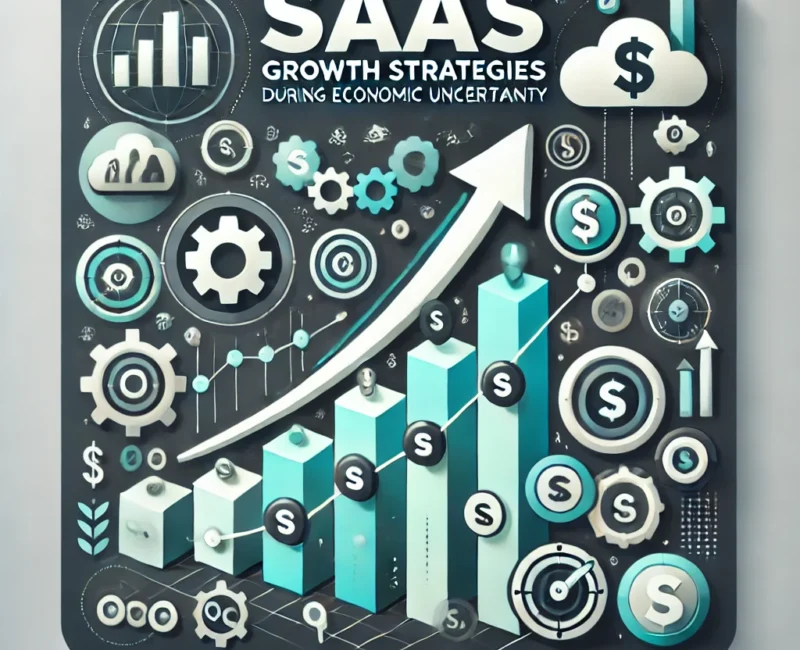In today’s volatile economic landscape, SaaS businesses face unprecedented pressure to sustain growth. Factors such as rising interest rates, supply chain disruptions, and shifting consumer behaviors can significantly impact your business. Despite these challenges, there are strategic approaches you can take to scale your SaaS business without the need to increase engineering, finance, or operations headcount.
This guide provides actionable insights on how to retain existing revenue, experiment with pricing, enhance customer experiences, optimize engineering resources, and automate back-office operations to drive growth even in tough economic times.
1. Retain and Grow the Revenue You Already Have
For SaaS and subscription-based companies, involuntary churn is a major challenge. Involuntary churn occurs when customers unintentionally stop paying due to issues like expired cards, insufficient funds, or outdated payment details. It’s a silent but significant problem, accounting for up to 25% of all customer churn. During times of economic uncertainty, retaining your existing revenue is more critical than ever.
The most effective way to combat involuntary churn is to proactively address potential payment failures before they occur. Automated systems can notify customers when their card is about to expire or when a payment has been declined. Furthermore, advanced billing platforms can automatically update expired card details and retry failed transactions on a customized schedule, such as every seven days, to improve the chances of successful payment processing.
Case in Point:
Postmates, an online delivery marketplace, managed to add over $70 million in revenue by reducing involuntary churn with the help of Stripe. By using Stripe’s card account updater, Postmates automatically updated more than two million expired or replaced customer cards, which contributed to the significant revenue boost. Additionally, Stripe’s Smart Retries feature helped recover over 200,000 failed payments, translating into an additional $3 million in revenue.
2. Experiment with Pricing and Offer Incentives to Drive Acquisition
In a fluctuating economy, flexibility is key. SaaS businesses must be agile enough to adjust their pricing strategies to align with changing customer behaviors. As consumer spending tightens, experimenting with different pricing models, promotional discounts, or subscription schedules can help attract and retain customers.
For instance, offering a free trial, introducing a lower-priced subscription tier, or implementing a usage-based pricing model can provide customers with more control over their spending. Usage-based pricing, where charges vary based on how much of a service is used, can be particularly effective in encouraging customers to stay engaged with your product.
Example:
Deliveroo, an on-demand food delivery service, successfully introduced a new revenue stream by launching Deliveroo Plus, a subscription service offering free delivery for a monthly fee. By partnering with Stripe, Deliveroo was able to seamlessly implement this new tier, which not only increased recurring revenue but also improved customer retention among subscribers.
3. Tailor the Customer Experience
In an environment of economic uncertainty, providing a personalized and convenient payment experience can be a differentiator that drives sales. Customers appreciate the ability to manage their payments in a way that suits their cash flow needs, especially during financial instability.
Consider offering flexible payment terms, allowing customers to choose when they want to pay—immediately, within seven days, or within 30 days. Additionally, customizing payment methods to match customer preferences can significantly enhance the user experience. For example, supporting local payment methods and currencies can be crucial when expanding into new markets.
Example:
Noom, a digital health platform, discovered that direct debit was a preferred payment method for its customers in Germany, surpassing credit cards in popularity. By working with Stripe, Noom was able to easily integrate this local payment method, which not only facilitated smoother transactions but also helped the company cater to the specific needs of its global customer base.
4. Optimize Your Engineering Resources
Building and maintaining a custom billing solution can be a significant drain on engineering resources, especially as your business scales. As your product offerings expand and your customer base grows, so does the complexity of managing billing, invoicing, and payment processing. This can lead to a situation where your engineering team spends more time maintaining the billing system than focusing on core product development.
To alleviate this burden, consider adopting a robust, customizable billing platform that can handle the complexities of recurring billing, pricing experiments, global expansion, and regulatory compliance. By offloading these tasks, you free up your engineering team to focus on innovation and product improvement.
A comprehensive billing solution should seamlessly integrate with your internal systems, minimize voluntary and involuntary churn, and provide valuable insights into key business metrics. It should also support flexible billing logic, allowing you to adjust pricing and billing structures as needed without extensive manual intervention.
5. Automate Your Back Office
As your SaaS business grows, managing the logistics of payments, invoicing, and compliance becomes increasingly complex. Manual processes, such as invoice reconciliation and revenue reporting, can be time-consuming and prone to errors, which not only slows down your finance team but also increases the risk of inaccuracies.
Automation is key to overcoming these challenges. By automating back-office operations, you can improve efficiency, reduce errors, and ensure that your business scales smoothly. Look for a billing solution that offers the following automated features:
- Invoice Reconciliation: Traditionally, reconciling invoices involves manually matching incoming payments to outgoing invoices, which can take hours for each transaction. Automation can streamline this process by automatically matching payments to invoices, freeing up your finance team to focus on higher-value tasks.
- Accrual Accounting: Revenue reporting becomes more complicated as your business grows, especially when dealing with changes, refunds, and prorations. An automated solution should simplify the process of recognizing and deferring revenue, ensuring compliance and providing a clear view of your financial health.
- Tax Compliance: Staying compliant with tax regulations is critical, especially for businesses operating in multiple regions. Tax rules vary by location and change frequently, making manual compliance efforts cumbersome and error-prone. Automated tax management tools can monitor your obligations, calculate the correct amount of tax for each transaction, and provide the necessary data for accurate and timely filings.
Economic uncertainty presents significant challenges for SaaS businesses, but it also offers opportunities for growth and innovation. By focusing on retaining existing revenue, experimenting with pricing, enhancing the customer experience, optimizing engineering resources, and automating back-office operations, you can position your business to thrive even in difficult times.
Investing in the right tools and strategies will not only help you weather economic storms but also set the stage for long-term success. Remember, adaptability and efficiency are key—embrace change, optimize your operations, and continue to deliver value to your customers.
Disclaimer: The information provided in this article is for general informational purposes only and does not constitute legal or financial advice. Always consult with a qualified professional before making any business decisions.






